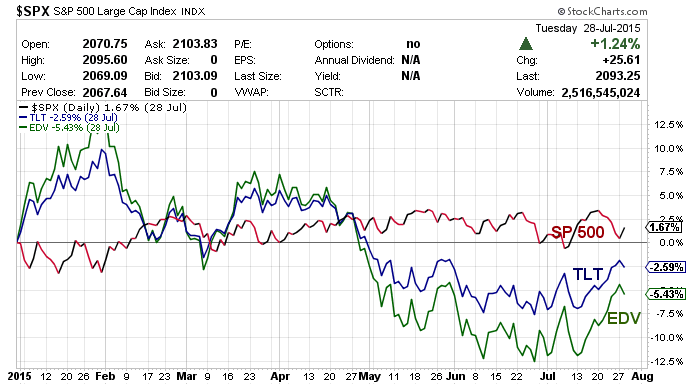 Are you comfortable putting significant new money to work buying stocks when they are at or near all-time highs? For instance, the S&P 500 hit an all-time high of 1561.80 on October 12, 2007 almost 5 years to the day after the low in 2002.
Are you comfortable putting significant new money to work buying stocks when they are at or near all-time highs? For instance, the S&P 500 hit an all-time high of 1561.80 on October 12, 2007 almost 5 years to the day after the low in 2002.
There wasn’t anything special that happened on that October day in 2007—nothing that screamed “Get Out!” In fact, based on how the markets had been behaving, buying stocks may have been a very rational decision. The Fed was talking about the punchbowl and was confident in their ability to manage the economy implying there was nothing to worry about and there was clear sailing ahead.
It wasn’t until July the following year that the main part of the crash started. There were warning signs, though because the market had already declined 20% by then. Most people weren’t paying attention to the underlying market currents and they ended up losing another 36% in the following months.
The S&P 500 most recently set an all-time high of 2134 on May 20th, 2015. Since then it has tried to surpass that on two different occasions and failed. Still, the pull backs have been modest—roughly 4%. And the stock market has gone an extended period of time without the customary 10 percent correction. And we are now 76 months into this stock market expansion. I believe that it’s hard for anyone to argue that stocks represent a good value right now.
Frankly, I am not comfortable broadly buying stocks at all-time highs unless I have confidence in the direction of interest rates. If the Federal Reserve decides to raise interest rates I believe that it could result in the economy slipping into recession. That could precipitate the start of the next stock market crash. On the other hand, if the Federal Reserve signals that interest rates will remain lower for longer, then I would expect the stock market to continue to go higher.
One problem that is occurring that complicates investing in stocks right now is that the number of companies that are able to grow their earnings is shrinking. That forces growth managers to chase a smaller universe of companies and results in valuations that are far in excess of historic norms. For instance, the Price to Earnings (PE) ratio on Netflix (NFLX) is 240! Compare that to a PE of 14.25 for Apple (AAPL). And Amazon (AMZN) skyrocketed as much as 17% when it released its latest earnings report. I can’t tell you what the PE is, though, because Amazon doesn’t make a profit!
So until there is more clarity in the direction of the Federal Reserve regarding interest rates, I will pursue a days-to-weeks trading strategy where I wait for a several percentage point pullback to buy and then try to lock in profits as the markets move back up toward all-time highs.
These are difficult times (at best) to be investing in stocks and caution is warranted. Even though I may be adding to equities on market pullbacks, the amount that I am allocating to stocks is significantly less than what I would normally have. Retired investors, especially, need to closely monitor what they are invested in and how much of their overall portfolio is exposed. In times like these, a healthy allocation to cash may be just what is needed to allow you to sleep well at night.
Meanwhile, after a terrible second quarter, US Treasury bonds are once again moving higher (and yields declining). Bond ETFs like the 20+ Year Treasury Bond ETF (TLT) and the Vanguard Extended Duration Treasury Bond ETF (EDV) have both recovered several percentage points while stocks have languished. The chart below shows YTD performance through yesterday’s market close (July 28). Note that over the last month the S&P 500 is down slightly while TLT and EDV are trading higher by nearly 5 and 8 percent, respectively.
Bond market volatility in Europe has declined and it is becoming more and more obvious that the Fed won’t be raising interest rates in September—I believe that points to US Treasury bond yields continuing to drift lower in the months ahead. I continue to favor US Treasury bonds over stocks.
Have a great week and thanks for reading.
Twitter: @JeffVoudrie
The author holds positions in mentioned securities at the time of publication. Any opinions expressed herein are solely those of the author, and do not in any way represent the views or opinions of any other person or entity.








